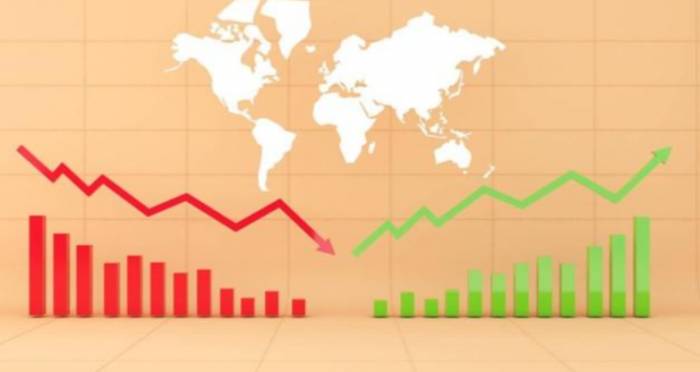Euro Leads Rate Cut Race!
The whole world knows that the United States is not yet ready to cut interest rates, but an increasing number of countries are pressuring the U.S. to follow suit, including the European Union.
This week, the European Central Bank has made its second interest rate cut decision this year.
As early as June, the ECB had already lowered all three key interest rates by 25 basis points.
This time, an asymmetric rate cut was adopted, with a larger decline in lending rates.
Among them, the deposit rate was only reduced by 25 basis points, while the two major lending rates were lowered by 60 basis points, so after this interest rate cut, the eurozone's interest rates returned to the era of 3%.
It is clear that the eurozone urgently needs to stimulate the economy, so it has withstood the pressure from the Federal Reserve and made independent adjustments to its monetary policy.
Recently, the economic situation in Europe is indeed severe.
In the first quarter, GDP grew by only 0.4% year-on-year, and the growth rate in the second quarter was only 0.6% year-on-year.
Among them, Germany's GDP for the first half of the year actually decreased by 0.2% year-on-year.
Therefore, the ECB has revised down its economic growth forecast for the eurozone for the next three years, expecting the GDP growth rate to be 0.8% in 2024, and 1.3% and 1.5% in 2025 and 2026, respectively.
Advertisement
Of course, the eurozone also has an advantage, that is, inflation has been controlled, and the situation is much better than that of the United States.
The latest data shows that the inflation level in the eurozone has approached the target range set by the ECB.
Since the beginning of this year, Europe's inflation rate has been below 3%, and in August, the overall inflation rate in the eurozone fell to 2.2% year-on-year, setting a new low in three years.
Therefore, Europe has more confidence to cut interest rates.
Normally, after the interest rate cut, the interest rate spread between the euro and the U.S. dollar is widened, which may lead to the depreciation of the euro against the U.S. dollar, and more capital may flee from Europe to the U.S. dollar.
However, since the ECB's interest rate cut, we have found that the euro has not depreciated significantly, and has even appreciated slightly.
More importantly, after the interest rate cut, it can guide more funds invested in manufacturing to enter Europe.
Because of this, the policies of many European countries have turned to the East and to Asia.
France has strengthened cooperation with China, Germany has made large-scale investments in China, the Prime Minister of Italy recently visited China, and the leaders of Norway and Spain have also visited China to seek answers.
In fact, it can also be seen from here that not only are the relations between European countries and the United States gradually becoming distant, but the inconsistencies between European countries and the EU are also becoming more and more obvious.
Although not long ago, the EU just made a decision to impose anti-subsidy duties on electric vehicles from China, during Spain's visit to China, the German media reported that Chery Automobile from China will invest and set up a factory in Spain and further expand.
In addition, Spain's pork is exported to China in large quantities, with the export volume last year exceeding $1.5 billion, ranking first among EU countries, even more than the sum of the second-ranked Netherlands and the third-ranked Denmark.

Therefore, Spain is very worried that once China's anti-dumping duties are established, it will have a serious impact on Spain's pork exports.
In fact, the example of Spain also represents France, Germany, and other European countries.
For EU President von der Leyen, what needs to be considered is how to rely on the United States, but for EU countries, it is more important to maintain and deepen trade cooperation with China.
This time, the ECB has decided to cut interest rates again, and the different interest rate policies between Europe and the United States also mean that the global economic pattern is undergoing tremendous changes.
Leave A Comment